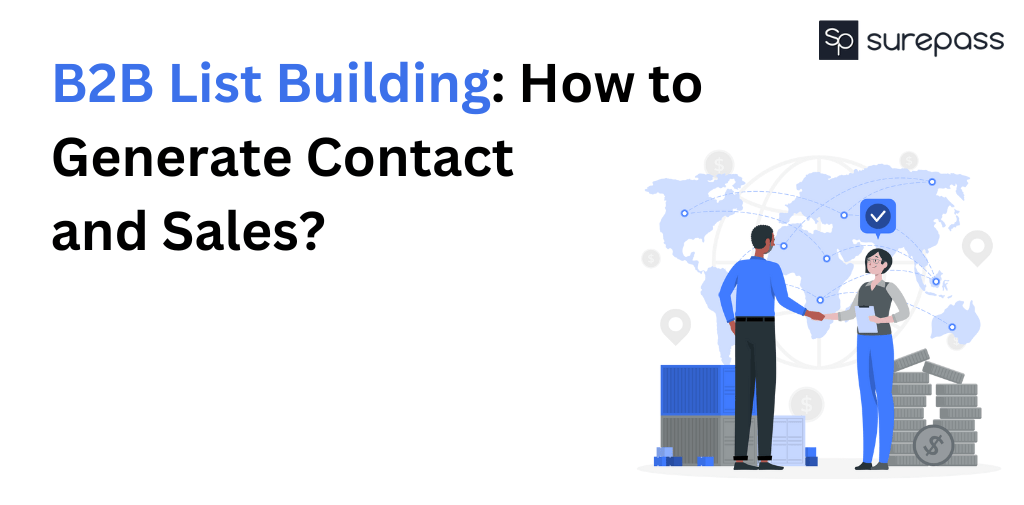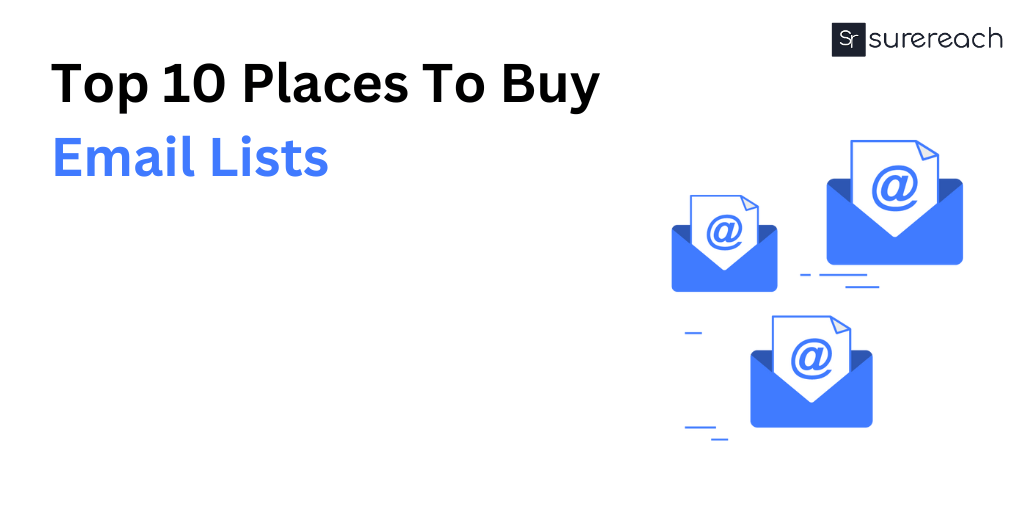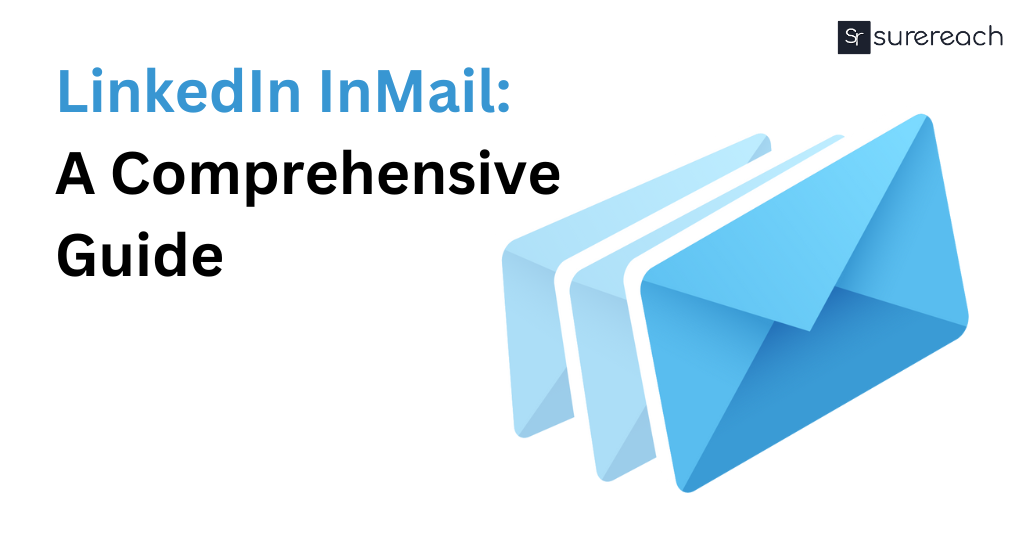How to Generate Contact and Sales ?
The answer should be on your B2B sales lead list, which is a list of contacts that you may work through your sales funnel until they become clients.
However, many firms squander time and money by employing outdated and erroneous lead lists. This is awful news for any organization!
B2B Email List
In this post, we’ll discuss how to create a B2B sales lead list that can propel your sales to the next level. Let’s go!
In a word, B2B list building is the process of compiling a list of contacts to whom you may reach out and nurture as leads. If you are asking what the distinctions are between B2B prospecting lists, B2B prospect lists, and B2B marketing lists, the answer is that they are all the same. The phrases are completely interchangeable; you may choose whatever one suits you!
What does the Sales Data List include?
1. Contact Information
Your leads’ names, email addresses, and phone numbers (ideally direct calls). Easy peasy!
Having current contact information is critical for future prospecting and follow-ups.
Information about the lead’s firm might include:
Details include name, industry, size, location, and website.
This information enables you to modify your strategy and messaging.
Sign up and get 20 credits for free!
We have 3 million+ contacts stored to connect you with prospects all over India
2. Job Title and Role
You want to know if the leader has decision-making authority, correct?
Having this information on your sales lead list will provide you with the knowledge you need to communicate with them effectively.
3. Demographics and Firmographics
Include demographic information for the lead, such as age, gender, and location.
Firmographic data, such as firm size, yearly revenue, and industry, is also useful; it allows you to select leads based on their suitability for your target market.
4. Lead source
This is the channel where you got the lead.
Documenting the lead source allows you to analyze your lead production; are you producing leads from the appropriate sources? Why not?
5. Lead scoring.
It is a good idea to provide a score or rating to each lead, depending on their potential worth and chance of conversion.
With an efficient lead scoring system in place, you can concentrate your attention on those with the greatest potential for sales success.
6. Interaction History
Keep track of all conversations and engagements with your leads, including:
Emails.
Telephone calls.
Face-to-face meetings.
Any other important touchpoints.
This history adds significant context to future talks and makes personalization simple!
7. Notes and Comments
Allow room on your sales lead list to include notes and remarks about the lead. This might include specific hobbies, pain spots, or other pertinent information gleaned from your talks or study.
These notes are used as a reminder and reference for future conversations.
8. Segmentation tags or categories
Consider using a labelling or classification method for your lead list. This is where you organize leads based on certain criteria.
Segmenting your leads enables you to simply execute marketing campaigns and provide tailored messaging.
9. Unsubscribe or opt-out option.
Whatever you do, ensure that your lead list complies with data protection standards!
Provide an opt-out or unsubscribe option for leads who do not wish to receive messages from you. Respecting their preferences fosters confidence while avoiding legal complications. This is a win-win for any prospecting salesman!
B2B Email Database- Effective tactics
B2B list development strives to generate a highly accurate and focused list. You don’t want to spend weeks or even months messaging a lead on your list just to discover that they aren’t a suitable fit for your product or are no longer employed by the organisation. Continue reading to discover more about the most effective B2B list-building tactics.
Step 1: Determine who your ideal consumer is.
Before you begin developing your list, you’ll need to identify your target consumer. This guarantees that you only spend time speaking with prospects that actually need your product/service and are more likely to buy.
How do you do it? Simple: ask everyone on the sales team to get down and discover common attributes and traits that your clients share. Here are some questions to put you on the right track:
- Which industry are your consumers from?
- How big are their companies? (Number of workers and/or annual income).
- What are your customers’ job duties and responsibilities?
- What challenges do they confront in their jobs?
- What are their key performance indicators and job responsibilities?
2. Determine which companies and decision-makers you want to target.
Now that you know who is likely to convert to a paying client and what sort of firm they are likely to work for, create a list of organizations that match the bill. Once that’s completed, focus on the departments and decision-makers (CEOs, CFOs, etc.) you want to approach.
If you want to approach established corporations with more resources to pay for your product/services, start with the Fortune 100, 500, or 1000 list. After you’ve generated a list of relevant firms, use LinkedIn to look for their executives or decision-makers.
3. Search the web for your leads’ contact information.
We won’t lie: the research process may be rather exhausting. Here, you’re effectively cyber-stalking your leads; you’ll want to look at their social media accounts, their company’s website, interviews and profiles they’ve done, and press releases they’ve sent to get their contact information.
4. Validate contact information.
The typical B2B sales and marketing database decays by more than 36% every year, so if you have a prospect’s phone number from a press release distributed in 2015, there’s a good chance it’s no longer in use. Keeping this in mind, double-check the contact information you’ve obtained to verify your list isn’t mostly useless leads.
How do you do it? Prepare a brief script, then phone the numbers you’ve collected. Keep your initial conversation brief; identify yourself, ask your lead a few qualifying questions, and inform them that your colleague will contact them in a few days to discuss how they can assist your lead to alleviate XYZ’s pain problem.
You might be thinking, “Dang, that sounds like a lot of work.” If you don’t want to construct your own B2B list, you have alternative possibilities. You may employ an external firm to assist you with this (warning: it will be expensive) or use a technology like Surereach to speed your B2B list-building process.
5. Optimise your website.
Your website is crucial for generating lead lists. Remember, it’s the only component of your sales and marketing team that never sleeps!
Ensure that it has clear calls to action and lead capture forms. Offer incentives such as free trials, consultations, or newsletters to attract visitors to share their contact information.
6. Attend industry gatherings.
Conferences, trade exhibitions, and industry expos are excellent opportunities to network with new prospects and generate awareness about your product/service.
At the event, set up your own corporate booth and outfit your SDRs with scanning applications. Have them scan everyone who comes to your booth! At the end of the day, you’ll have a completely new set of leads to follow up with.
7. Utilise social media.
Never underestimate the impact of personal branding on sales. Encourage your sales staff to interact with your leads on the channels they use on a daily basis. The more valuable material they share, the more attention and leads they will produce.








Sachin Bhola
More posts by Sachin Bhola